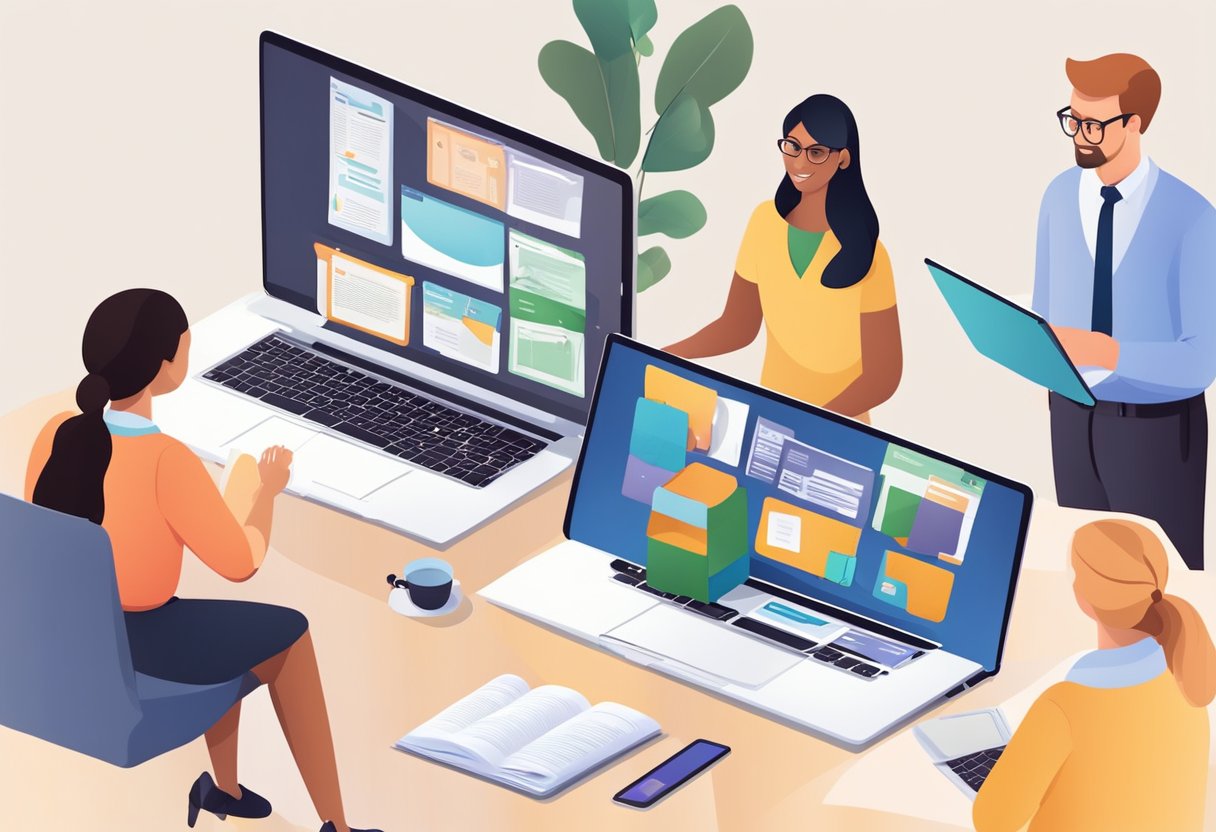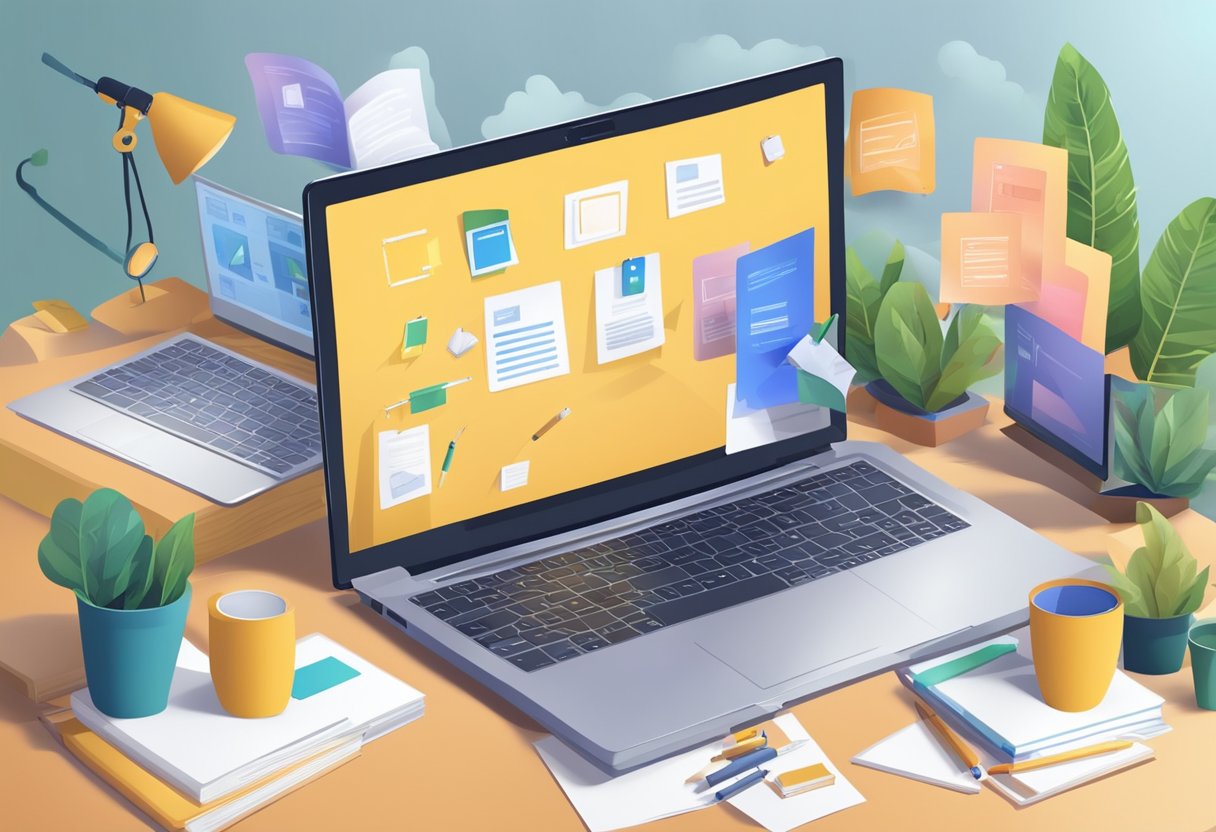Preparing Online Courses: How Teachers Are Adapting to the Digital Classroom
As the world continues to adapt to the COVID-19 pandemic, teachers are facing new challenges and opportunities in the way they deliver education. With many schools shifting to remote or hybrid learning models, educators are preparing their online courses to ensure students receive quality instruction in a virtual environment.

Preparing online courses requires careful planning and consideration of various factors, including technology, course content, and student engagement. Teachers must be proficient in using online tools and platforms to deliver lectures, assignments, and assessments. They must also adapt their teaching strategies to suit the online learning environment, such as incorporating interactive activities and providing opportunities for peer collaboration.
Despite the challenges, many teachers are finding that online teaching has its advantages. For example, it allows for greater flexibility in scheduling and can reach a wider audience beyond the physical classroom. As we continue to navigate the pandemic, teachers are rising to the challenge and finding innovative ways to provide quality education to their students.
Designing the Curriculum

When designing our online course, we must consider the unique challenges and opportunities that come with teaching in a digital environment. Designing a successful online course requires careful planning and consideration of the course objectives, content, and assessment strategies.
Course Objectives and Outcomes
We begin by clearly defining the course objectives and outcomes. These should be specific, measurable, and aligned with our overall teaching goals. We may use Bloom’s Taxonomy to help us create objectives that address different levels of cognitive complexity. By articulating our objectives and outcomes, we can ensure that our course is focused and effective.
Selecting Appropriate Content
Next, we must select appropriate content for our course. We should consider the needs and interests of our students as well as the course objectives. We may use a variety of resources, including textbooks, articles, videos, and interactive media. It is important to ensure that all content is accessible and engaging for our students. We may use multimedia tools such as videos, animations, and simulations to enhance the learning experience.
Assessment Strategies
Finally, we must design appropriate assessment strategies for our course. These may include quizzes, exams, essays, projects, and discussions. We should align our assessments with the course objectives and ensure that they are fair, valid, and reliable. We may use rubrics to help us evaluate student work and provide feedback. It is important to communicate our expectations clearly to our students and provide them with timely feedback on their progress.
In summary, designing an effective online course requires careful planning and consideration of the course objectives, content, and assessment strategies. By following these guidelines, we can create a course that is engaging, accessible, and effective in achieving our teaching goals.
Technological Tools for Online Teaching

As educators, we must adapt to the changing times and embrace online teaching. To ensure the success of our online courses, we need to make use of technological tools that can help us deliver quality education to our students. In this section, we will explore some of the most useful technological tools for online teaching.
Learning Management Systems
Learning Management Systems (LMS) are essential tools for online teaching. They provide a platform for delivering online courses, managing course content, and tracking student progress. Some of the most popular LMSs include Moodle, Blackboard, and Canvas.
Moodle is an open-source LMS that is widely used by educators around the world. It offers a range of features such as course management, assignment submission, and grading. Blackboard is another popular LMS that is used by many universities and colleges. It offers features such as discussion forums, virtual classrooms, and multimedia support. Canvas is a cloud-based LMS that is user-friendly and offers features such as video conferencing, collaboration tools, and course analytics.
Interactive Elements and Multimedia
Interactive elements and multimedia can help to keep students engaged and interested in the course content. Some of the most useful interactive elements include quizzes, polls, and surveys. These tools can help to assess student understanding and provide feedback to both students and educators.
Multimedia elements such as videos, images, and audio can also be used to enhance the online learning experience. Videos can be used to demonstrate complex concepts, while images can be used to provide visual aids. Audio can be used to provide additional information or to provide narration for videos.
In conclusion, technological tools are essential for online teaching. Learning Management Systems and interactive elements and multimedia are just a few examples of the many tools that can be used to enhance the online learning experience. By making use of these tools, we can ensure that our online courses are effective, engaging, and successful.
Engaging Students Online
As teachers, we know that engaging students is crucial for their learning and success. However, engaging students online can be challenging. In this section, we will discuss some strategies for engaging students in an online environment.
Building Community
One of the most important aspects of engaging students online is building a sense of community. When students feel connected to their classmates and instructor, they are more likely to participate and engage in the course. To build community in an online course, we can:
- Use icebreakers and introductions to help students get to know each other
- Encourage students to share their thoughts and experiences in discussion forums
- Provide opportunities for students to collaborate on group projects or activities
- Use video conferencing for synchronous class sessions to facilitate real-time interaction
By building a sense of community in our online courses, we can create a supportive and engaging learning environment.
Synchronous vs Asynchronous Interaction
Another important consideration for engaging students online is the type of interaction we use. Synchronous interaction occurs in real-time, while asynchronous interaction occurs at different times. Both types of interaction have their benefits and drawbacks, and it’s important to consider which type of interaction is best for different activities and learning objectives.
Synchronous interaction can be useful for:
- Facilitating real-time discussion and feedback
- Building a sense of community and connection
- Providing opportunities for immediate clarification and support
Asynchronous interaction can be useful for:
- Allowing students to work at their own pace
- Providing flexibility for students with different schedules and time zones
- Encouraging thoughtful reflection and consideration before responding
By considering the benefits and drawbacks of synchronous and asynchronous interaction, we can choose the best type of interaction for different activities and learning objectives, and create an engaging and effective online course.
Adapting to Student Feedback

As online teachers, we need to be responsive to student feedback to improve the learning experience. Here are some ways we can adapt our courses based on student feedback:
1. Solicit Feedback Regularly
We should regularly solicit feedback from our students to understand their needs and preferences. This feedback can be collected through surveys, polls, or discussion forums. By collecting feedback regularly, we can make adjustments to our course in real-time and improve the learning experience for our students.
2. Analyze Feedback Carefully
Once we have collected feedback, we need to analyze it carefully to identify patterns and trends. This analysis can help us identify areas of the course that need improvement or modification. For example, if students consistently report difficulty with a particular topic, we can modify our approach to that topic or provide additional resources to help students understand it better.
3. Make Changes Based on Feedback
Based on the feedback we receive, we should make changes to our course to improve the learning experience. These changes could include modifying the course content, adjusting the pace of the course, or providing additional resources. By making changes based on student feedback, we can create a course that meets the needs of our students and helps them achieve their learning goals.
In summary, adapting to student feedback is an essential part of online teaching. By soliciting feedback regularly, analyzing it carefully, and making changes based on feedback, we can create a course that meets the needs of our students and helps them achieve their learning goals.
*******
r teaching
r teachers
unprepared teachers
virtual teaching
why teach online
2 credit courses for teachers online
3 credit courses for teachers online
3 credit courses for teachers online ohio
3 credit graduate courses for teachers online
best online courses for teachers professional development
5 teaching
9 period teacher planner
